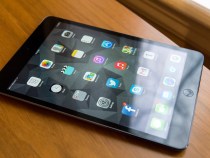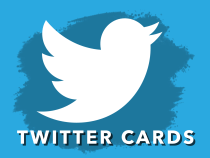
Apple’s new iPad mini for 2013 introduces by far the most oft-requested feature that was missing from the original version: a high resolution Retina display for ultra-sharp rendering of text and images. Apple has added that screen without introducing trade-offs in terms of battery life, size (substantial ones anyway) and portability, too. This is the iPad mini everyone wanted to begin with, and now it’s here, and it’s the best tablet money can buy.
Video Review
Basics
- 2048 x 1536 7.9-inch Retina display
- 16GB, 32GB, 64GB and 128GB
- A7 processor
- 802.11n dual-channel Wi-Fi, Bluetooth 4.0
- 10 hours general use on Wi-Fi, 9 hours on cellular
- Starts at $399
Pros
- Super high resolution screen in a thin, light and portable package
- All the processing power of A7
Cons
- Slight changes in dimensions means first generation accessories might not fit
- Price increase versus first generation device
Design
The Retina iPad mini retains essentially the same design as its predecessor, with some slight changes to account for generational differences. The most noteworthy changes from an exterior standpoint are the addition of the space grey finish, which replaces the black version, and the addition of a tiny bit of size and weight to the original case specifications.
-
ipad-mini-back
-
ipad-thicknesses
-
ipad-mini-family
-
ipad-mini-camera
-
ipad-mini-bottom
-
ipad-mini-rear-table
-
ipad-mini-rear-hand
-
ipad-mini-front-hand
-
ipad-mini-front-low-angle
Before anyone gets too worried about that size and weight gain, however, rest assured that this is nothing like the additional girth added to the 9.7-inch iPad between generation one and two. Apple packed on the pounds in that generation, in order to make room for the extra battery needed to power the iPad 3′s Retina display. This time, it has also had to change the dimensions slightly, but the difference in negligible: it adds just 0.3mm of thickness, and 29 grams of weight to the svelte proportions of the original.
In practice, this makes literally no difference to how you’ll perceive the mini. It still feels the same in the hand, and is just as comfortable to use one-handed as its predecessor. The original iPad mini set the bar for tablet design as far as I’m concerned, and the new version maintains that. There are also some small but crucial tweaks to the exterior design in terms of function: a second microphone input helps detect and compensate for background noise, making FaceTime calls and Siri more effective.
Display
The iPad mini with Retina display is all about that last bit – “with Retina display” – so the screen is the real star of the show in many ways. And it delivers an outstanding performance. On our review model, photos were just outstanding. Comparing them to photos viewed on the first generation iPad mini’s display reveals levels of fine detail not previously visible. And just glanced at casually, there’s such an improvement in sharpness original device owners might feel as though they’ve needed glasses all this past year and just never knew it.
The display on our review unit worked perfectly in testing, and didn’t display any of the image retention uses that seem to be affecting a small portion of users. The most amazing part of the screen is how it can achieve those results using a case design that’s otherwise similar: packing twice the pixels into the same amount of screen space as was found on the original is no mean feat, and Apple has essentially pulled off a show-stopping magic trick in doing so.
The original iPad mini quickly replaced my iPad 3 as my tablet of choice in most, if not all situations. But the lack of a Retina display was a tough pill to swallow, and every time I’d go back to using a Retina screen on a Mac, iPhone or 9.7-inch iPhone, I felt the lack of the same tech on the mini. Apple has now delivered on the only thing holding the ur-mini back, and it’s hard to understate the value of that.
Features
This Retina iPad mini offers up that excellent sound isolation tech I mentioned before thanks to the positioning of its mics, and that pays big dividends for FaceTime calls, according to my testing. It also packs new MIMO capabilities for the Wi-Fi antenna, which ensures that your iPad should have more reliable Wi-Fi connections, available at longer ranges than before (so long as you’ve got a wireless router that’s MIMO capable, which you should if you’ve bought one in the last few years). It’s hard to test this with much accuracy, but I definitely found the Mini’s Wi-Fi connection to be solid throughout testing on various networks.
The version I tested was the iPad mini with cellular connectivity, and the LTE radio also worked very well throughout testing. I was only able to test it on Canadian networks, but the Retina iPad gets the same multiband LTE radio that’s available in the iPad Air, which means it can easily tackle 4G networks around the world. In testing the Air, I found that it worked flawlessly between the U.S., UK and Canada, and I expect the iPad mini with Retina will be no exception.
Performance
The iPad mini with Retina has a brand new, gorgeous display, but it also has an A7 processor and M7 coprocessor that are every bit as powerful as the ones within the iPad Air. That means one thing: this device gets a huge boost over its predecessor when it comes to performance, and can handle every type of creative task you might think to throw at it.
This device gets a huge boost over its predecessor when it comes to performance.
Apple putting an M7 activity tracking chip in the iPad mini seems an odd choice, since it’s a device that’s far less likely to be in your pocket with you at all times than the iPhone 5s, but it actually has some neat tricks up its sleeve. It can tell Day One what type of activity you were doing while you logged something in that digital journal, for instance, offering up more context. It’s easy to see how gathering that contextual data about what’s going on while you’re using your iPad could be put to other uses, too.
The A7′s power is truly awesome, though. When you run an app like iMovie, and can near instantly compose clips with inset video and then have them render and playback with virtually no wait time, it’s apparent this is no mere evolutionary step in computing. It’s faster than when I use Final Cut Pro X on my primary video editing Mac, and it can be done by anyone, anywhere. Plus, the camera on the iPad mini, while only 5 megapixels, still beats those in most flagship smartphones out there. The rear shooter gets a boost thanks to Apple auto-improving multi-frame recombination tech, and the front-facing one gets an upgrade too, which is better able to deal with low-light situations thanks to bigger pixels.
Battery
Apple has managed to increase the capacity of the battery considerably, while not drastically increasing the size. But it paid off: The Retina iPad mini gets the same long-lasting battery life on a full charge as its predecessor. On mixed use, I was getting an average of about 8-10 hours out of a full charge during my testing.
Battery continues to be the iPad’s strong suit, and a big advantage it has over competitors. The iPad mini easily beats its closes rival, the Nexus 7 on this score for instance, and its ability to hand both the outstanding increased processing power of the A7 while still maintaining the same usage time as the iPad mini is really remarkable.
Cases
-
ipad-mini-smart-case
-
ipad-mini-smart-cover
As with the iPad Air, Apple offers two different case options for the iPad mini with Retina display, including a Smart Cover and a Smart Case. The Cover protects the screen and is remarkably light and made of polyurethane, while the Smart Case protects the back as well as the display but also adds a bit more thickness. Of the two, I prefer the Smart Case with the iPad mini, since the leather shell feels great in the hand, and it offers peace of mind while still managing not to compromise the iPad mini’s portability.
Bottom Line
The iPad mini with Retina display is the iPad mini I’ve been waiting for since the concept was even floated many years ago. You’ll pay a premium price to get it, but that nets you not only the gorgeous screen, but also the power of the A7 processor within. Since that offers 64-bit processing and power that developers have only begun to explore, this is also, maybe more than any other device that came before it, a future-looking iPad that’s nearly perfect as-is but sure to get better with age.




















